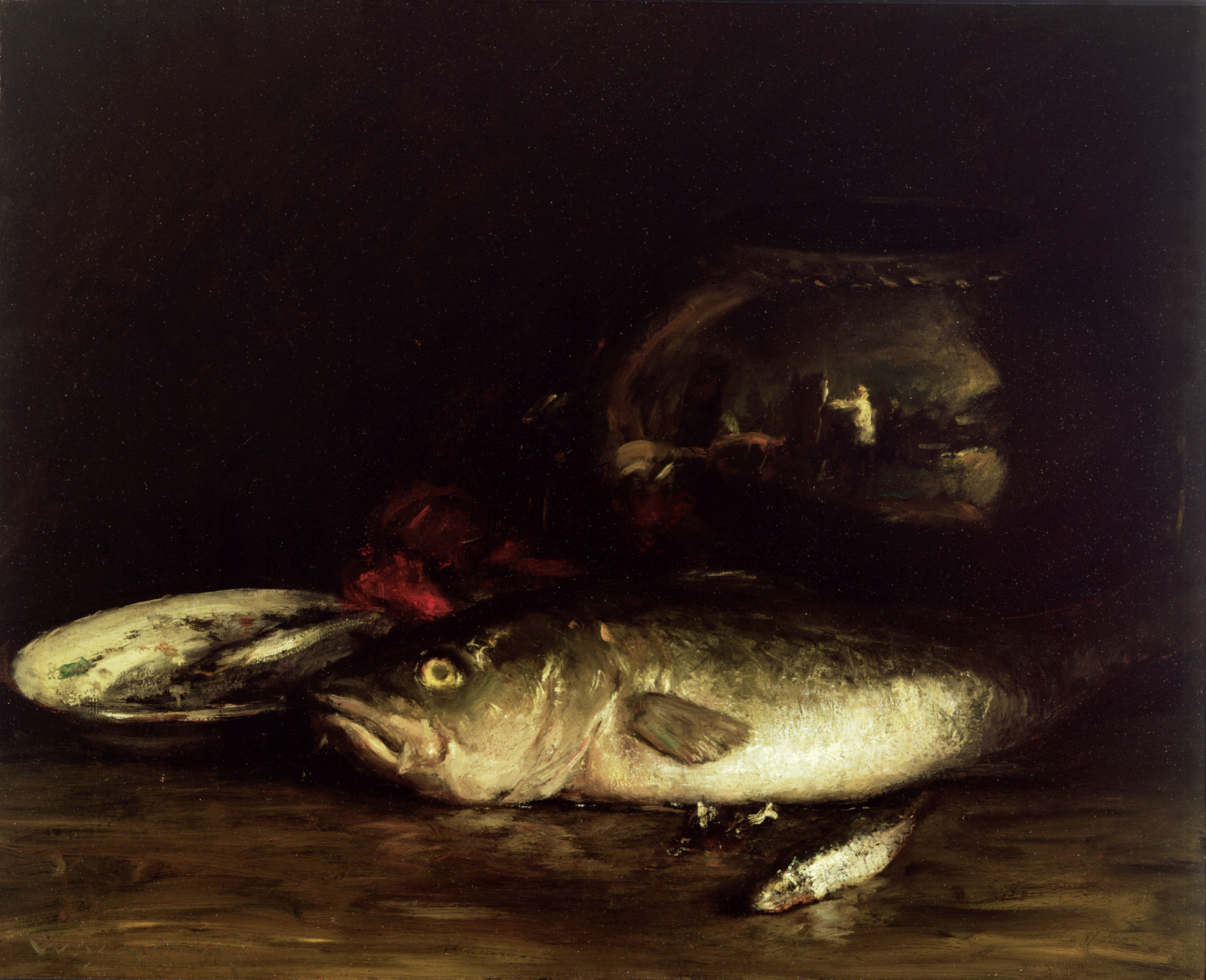William Merritt Chase
(Nineveh, Indiana, 1849 - 1916, New York, New York)
Cod
c. 1904–1914
Oil on canvas
29 1/4 x 36 1/4 in. (74.4 x 92.2 cm)
Collection of the Akron Art Museum
Bequest of Edwin C. Shaw
1955.17
More Information
William Merritt Chase was a renowned landscape, portrait, and still life painter, teacher and arts leader. Many of his fish still lifes were painted late in his career, often as demonstrations for his students. For his fish studies, Chase favored the dark colors and bravura brushwork he had adopted while studying at the Royal Academy in Munich in the 1870s. This style reflects the artist’s admiration for the 17th-century Dutch and Spanish art he encountered in Europe. 'Cod' typifies Chase’s approach in its arrangement of different varieties of fish in front of a large copper bowl that reflects the studio interior, including the artist at his easel. In 'Cod', Chase’s glistening highlights and vibrant paint quality transform dead fish into objects of beauty. The artist acknowledged his affinity for such subjects, commenting: I enjoy painting fishes; in the infinite variety of these creatures, the Subtle and exquisitely colored tones of the flesh fresh from the water, the way their surfaces reflect the light, I take the greatest pleasure. In painting a good composition of fish, I am painting for myself.
Keywords
FishAmerican
Still Life
Painting

